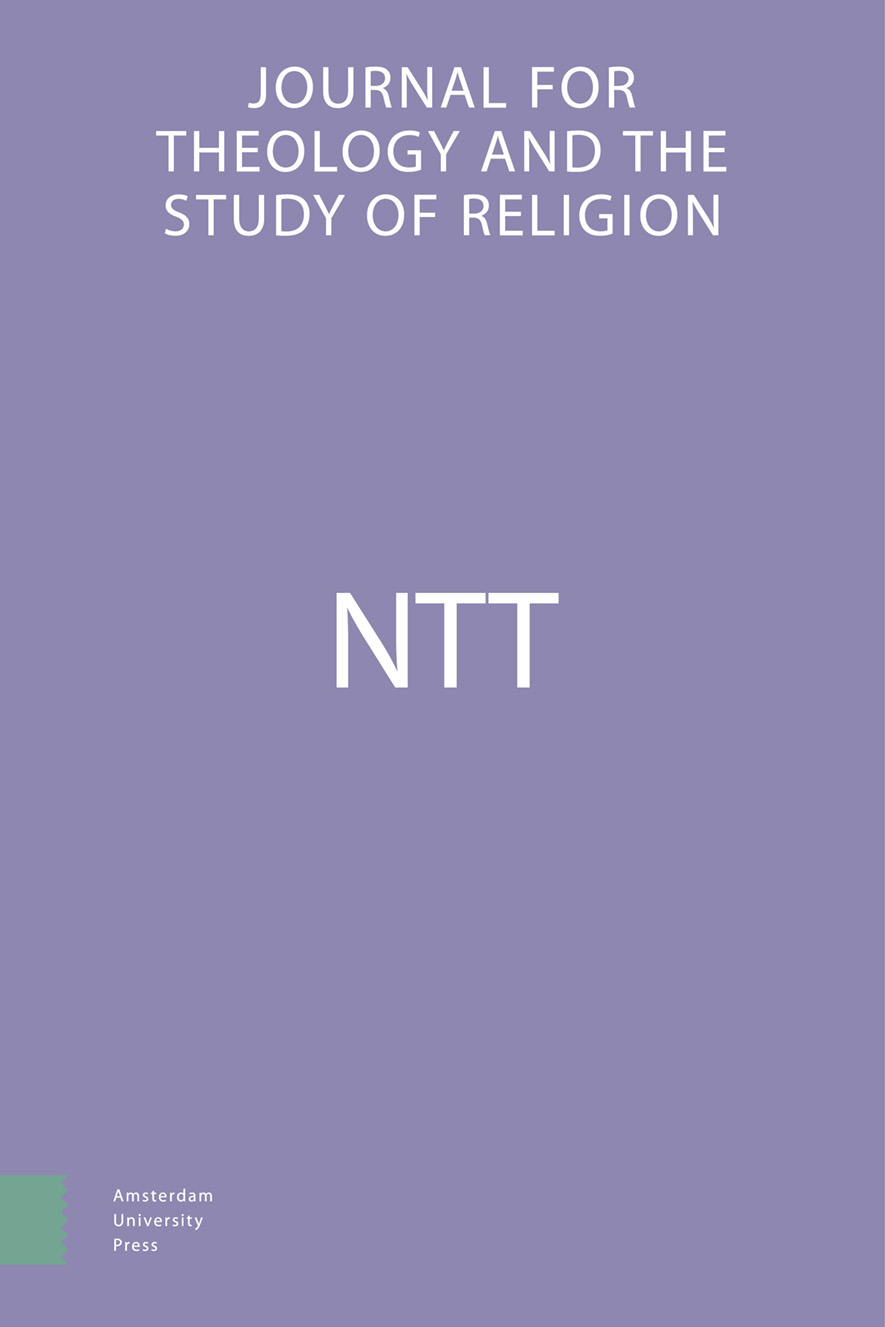- Home
- A-Z Publications
- NTT Journal for Theology and the Study of Religion
- Previous Issues
- Volume 51, Issue 3, 1997
NTT Journal for Theology and the Study of Religion - Volume 51, Issue 3, 1997
Volume 51, Issue 3, 1997
-
-
Een dal vol beenderen Een Afrikaanse visie op westers christendom
1Dit artikel is een bewerking van het door schrijfster dezes op 3 september 1996 te Utrecht gehouden openbaar college ter gelegenheid van de opening van het academisch jaar 1996-1997 door de Katholieke Theologische Universiteit te Utrecht en de Theologische Faculteit van de Universiteit Utrecht.
More LessAuthor: Gerrie ter HaarAbstractThis article discusses the ideas which African Christians have of their Western counter-parts, notably in Western Europe, where African immigrants have recently founded congregations. African views of Christianity contain certain characteristics which Westerners tend to associate with traditional African religious beliefs. Western commentators often interpret the continuity between tradition and modernity in the spirituality of African Christians as a sign of fundamentalism. African Christians, in turn, are determined to evangelise Europe in order to turn what many see as the ‘valley of dry bones’ into a fertile garden.
-
-
-
Nat—Koopmans—Lettinga—Muraoka Ontwikkelingen in de hebraïstiek van 1936 tot 1996
1De auteur van dit artikel heeft dankbaar gebruik gemaakt van de waardevolle opmerkingen en suggesties van mevrouw drs. M. Nat, prof. J.P. Lettinga, prof. T. Muraoka, prof. J. Hoftijzer, prof. K.R. Veenhof en drs. M.F.J. Baasten.
More LessAuthor: W.Th. van PeursenAbstractThe article describes the history of Jan Nat’s Hebrew grammar from the first (1936) till the tenth (1996) edition. The revisions by Nat himself, Koopmans, Lettinga and Muraoka reflect the developments that took place in the study of Hebrew in the course of this century. These include the dominance and subsequent decline of the historical-comparative method of Bauer-Leander and Brockelmann, the discovery of new material (Ugarit, Qumran) and the attempts of Meyer and others to incorporate it into the description of Hebrew, and the application of new insights from general linguistics and comparative Semitics to Hebrew grammar. The substantial changes made in the new, tenth edition in relation to the ninth are also illustrated.
-
-
-
Frederik van Eeden en Martin Buber
More LessAuthor: L. EngelfrietAbstractBetween 1910 and 1924 Van Eeden and Buber disagreed about the realisation of their socio-religious ideas. Inspired by a universal ideal of oneness Van Eeden, with kindred spirits, wanted to animate humanity. Averse to dogmatism he ended up in the Roman Catholic Church via platonic, oriental and signific avenues. Buber wished to actualize God in the community in an undogmatic, Nietzschean way. His permanent Zionist orientation became entangled with German nationalism between 1914 and 1916. Buber’s mystical war experience got him into conflict with the antimilitarist Van Eeden, so that their elite, the Forte-Kreis, which had a international brotherhood in mind, disintegrated.
-
Volumes & issues
-
Volume 79 (2025)
-
Volume 78 (2024)
-
Volume 77 (2023)
-
Volume 76 (2022)
-
Volume 75 (2021)
-
Volume 74 (2020)
-
Volume 73 (2019)
-
Volume 72 (2018)
-
Volume 71 (2017)
-
Volume 70 (2016)
-
Volume 69 (2015)
-
Volume 68 (2014)
-
Volume 67 (2013)
-
Volume 66 (2012)
-
Volume 65 (2011)
-
Volume 64 (2010)
-
Volume 63 (2009)
-
Volume 62 (2008)
-
Volume 61 (2007)
-
Volume 60 (2006)
-
Volume 59 (2005)
-
Volume 58 (2004)
-
Volume 57 (2003)
-
Volume 56 (2002)
-
Volume 55 (2001)
-
Volume 54 (2000)
-
Volume 53 (1999)
-
Volume 52 (1998)
-
Volume 51 (1997)
-
Volume 50 (1996)
-
Volume 49 (1995)
-
Volume 48 (1994)
-
Volume 47 (1993)
-
Volume 46 (1992)
-
Volume 45 (1991)
-
Volume 44 (1990)
-
Volume 43 (1989)
-
Volume 42 (1988)
-
Volume 41 (1987)
-
Volume 40 (1986)
-
Volume 39 (1985)
-
Volume 38 (1984)
-
Volume 37 (1983)
-
Volume 36 (1982)
-
Volume 35 (1981)
-
Volume 34 (1980)
Most Read This Month

Most Cited Most Cited RSS feed
-
-
How to read Philo
Author: D. T. Runia
-
- More Less

